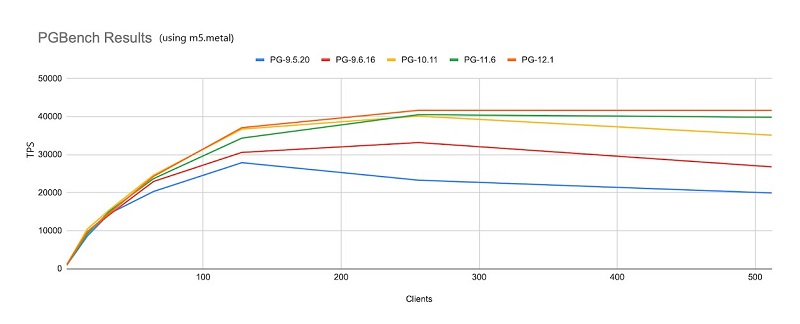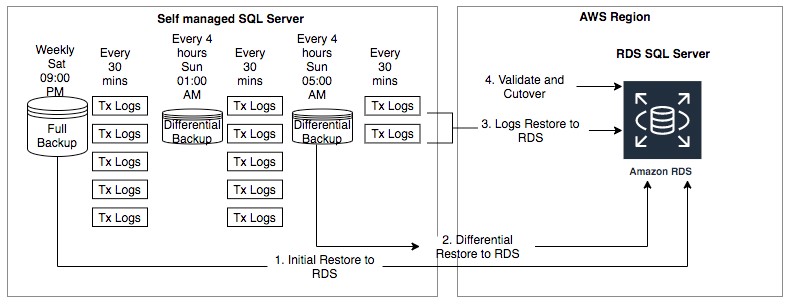AWS Database Blog
Category: Amazon RDS
Upgrading from Amazon RDS for PostgreSQL version 9.5
Updated on 02/18/2021 with more details about the automatic upgrade and its timeline. The PostgreSQL – community releases a new major version yearly, with a defined end of life (EOL) policy of older major versions. This allows you to make version and upgrade decisions well into the future. The community EOL policy is to support […]
Performance impact of idle PostgreSQL connections
July 2023: This post was reviewed for accuracy. The first post of this series, Resources consumed by idle PostgreSQL connections, talked about how PostgreSQL manages connections and how even idle connections consume memory and CPU. In this post, I discuss how idle connections impact PostgreSQL performance. Transaction rate impact When PostgreSQL needs data, it first […]
Resources consumed by idle PostgreSQL connections
July 2023: This post was reviewed for accuracy. PostgreSQL is one of the most popular open-source relational database systems. With more than 30 years of development work, PostgreSQL has proven to be a highly reliable and robust database that can handle a large number of complex data workloads. AWS provides two managed PostgreSQL options: Amazon […]
Managing Amazon RDS databases in multi-account environments with the AWS CLI
AWS provides AWS organizations and AWS Landing Zone solutions to manage and automate new account creation. This helps you to create multiple AWS accounts separated based on applications, development, production, or organizations within a company. This approach helps with resource isolation and separating development from production, but makes it complex for some of the teams […]
Best practices for using a MySQL read replica to upgrade an Amazon RDS for MySQL database
December, 2022: Amazon Relational Database Service (Amazon RDS) now supports Amazon RDS Blue/Green Deployments to help you with safer, simpler, and faster updates to your Amazon Aurora and Amazon RDS databases. Blue/Green Deployments create a fully managed staging environment that allows you to deploy and test production changes, keeping your current production database safe. Learn […]
Migrating an on-premises SQL Server database to Amazon RDS on VMware using SQL Server native backup and restore
Amazon Relational Database Service (Amazon RDS) on VMware delivers managed SQL Server databases in on-premises VMware environments. Managing SQL Server can be complex and time-consuming, but RDS on VMware makes it easy to provision, scale, and operate SQL Server in VMware vSphere clusters. You can migrate your existing on-premises SQL Server databases to RDS on […]
Federated query support for Amazon Aurora PostgreSQL and Amazon RDS for PostgreSQL – Part 1
PostgreSQL is one of the most widely used database engines and is supported by a very large and active community. It’s a viable open-source option to use compared to many commercial databases, which require heavy license costs. Amazon Relational Database Service (Amazon RDS) for PostgreSQL and Amazon Aurora PostgreSQL-Compatible Edition are AWS managed offerings that […]
Migrating SQL Server to Amazon RDS using native backup and restore
Running Microsoft SQL Server on Amazon Relational Database Service (Amazon RDS) automates time-consuming administration tasks such as installation, disk provisioning and management, patching, minor and major version upgrades, and backup and recovery of your SQL Server databases. Amazon RDS also offers high availability using a Multi-AZ solution, replicating data synchronously across different Availability Zones. Currently, […]
Creating an Amazon CloudWatch dashboard to monitor Amazon RDS and Amazon Aurora MySQL
July 2023: This post was reviewed for accuracy. Amazon Relational Database Service (Amazon RDS) makes it easy to set up, operate, and scale a relational database in the cloud. A highly performant database is key to delivering latency SLAs, so monitoring is critical. Amazon CloudWatch is a monitoring and observability service built for DevOps engineers, […]
Optimizing costs in Amazon RDS
July 2023: This post was reviewed for accuracy. One of the key benefits of AWS is the flexibility to provision the number of resources an application needs and scale up or down as requirements change. This requires monitoring your current resource utilization and having a policy to take actions when required. Without these proactive measures […]









